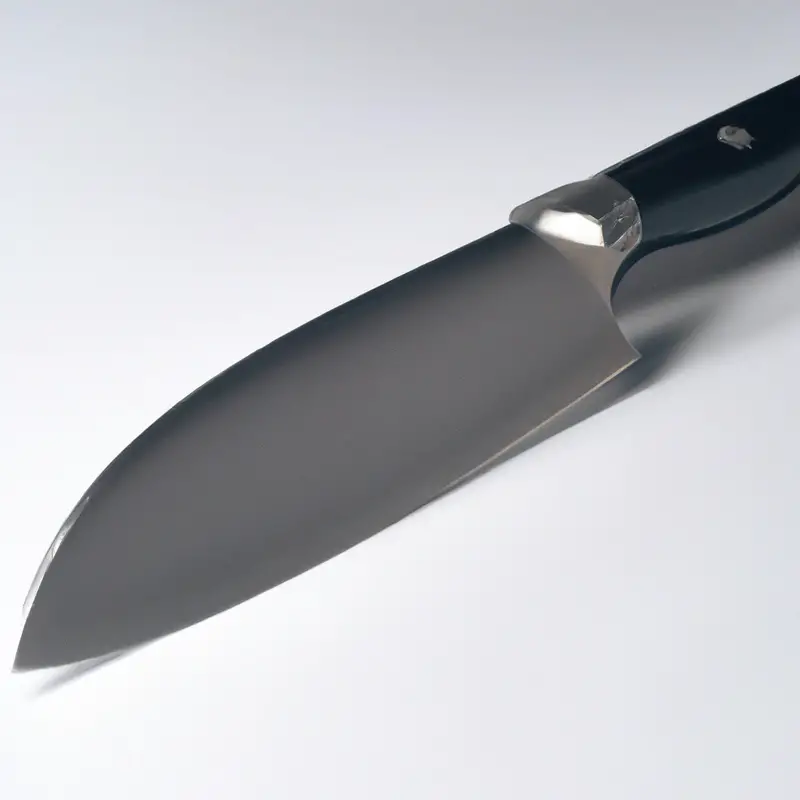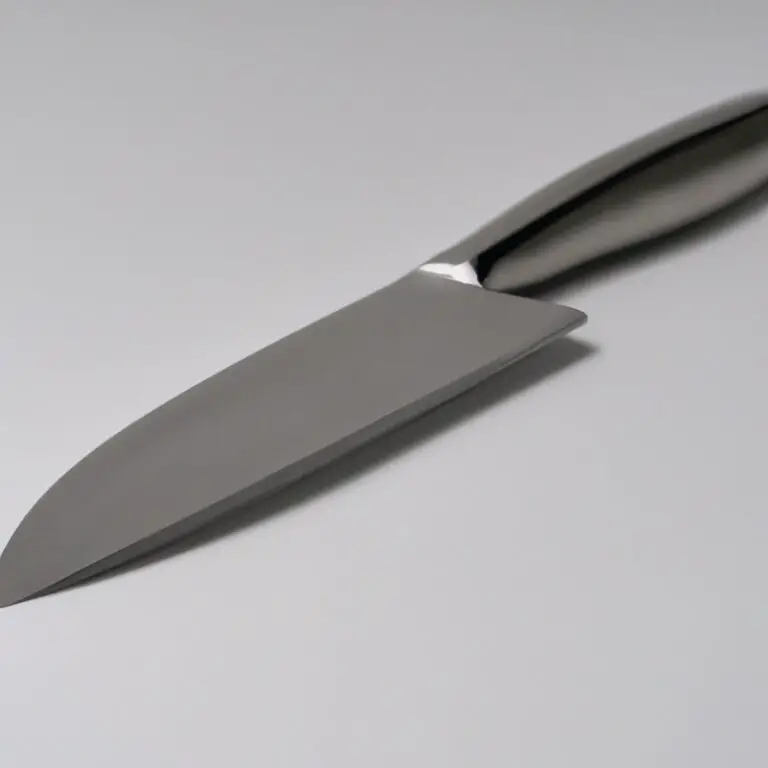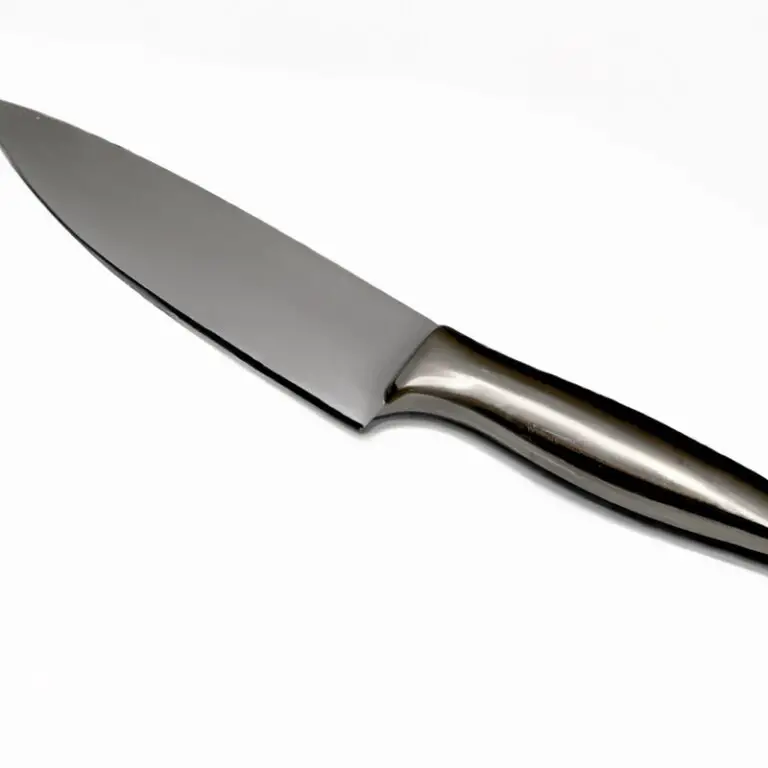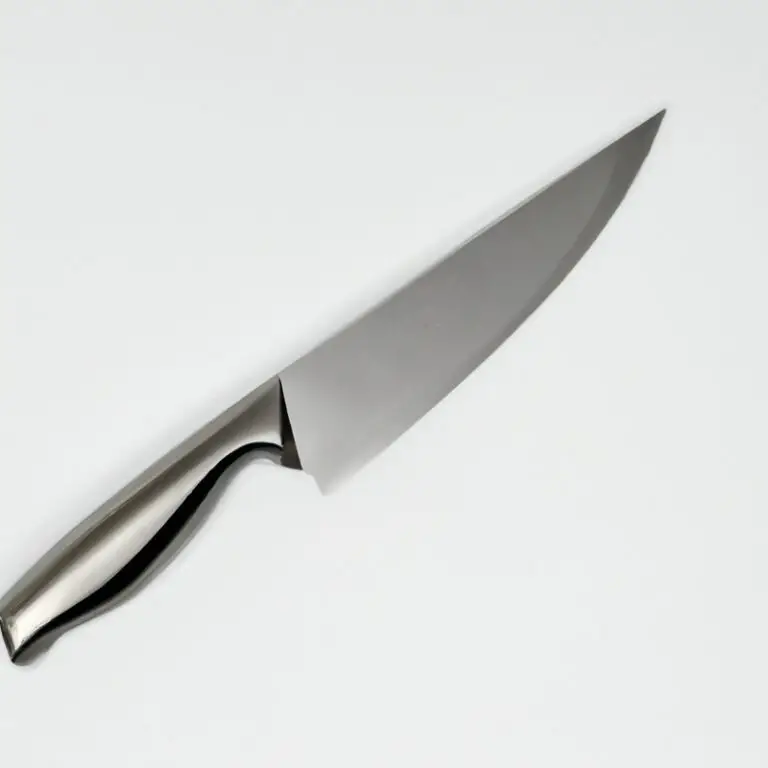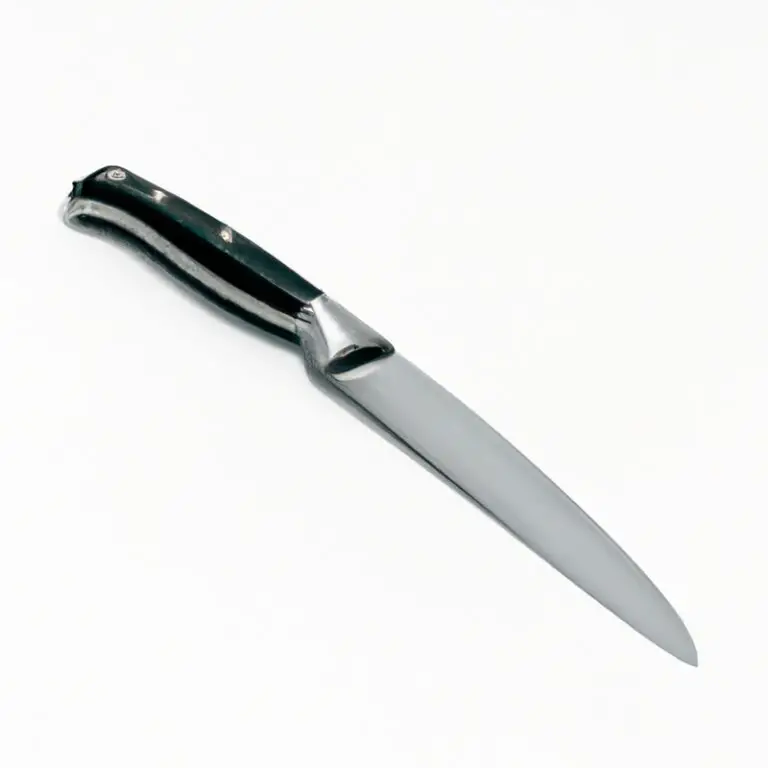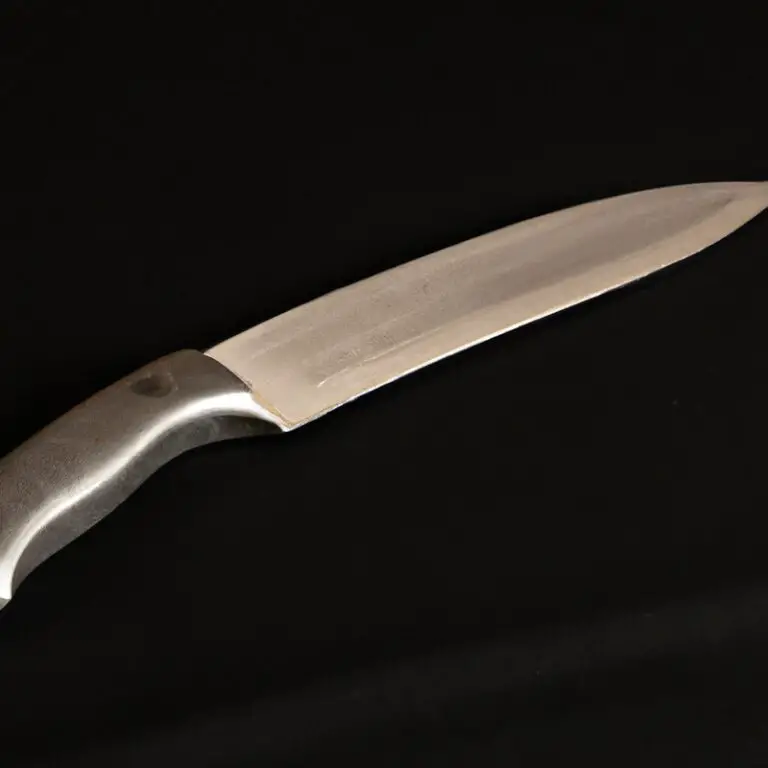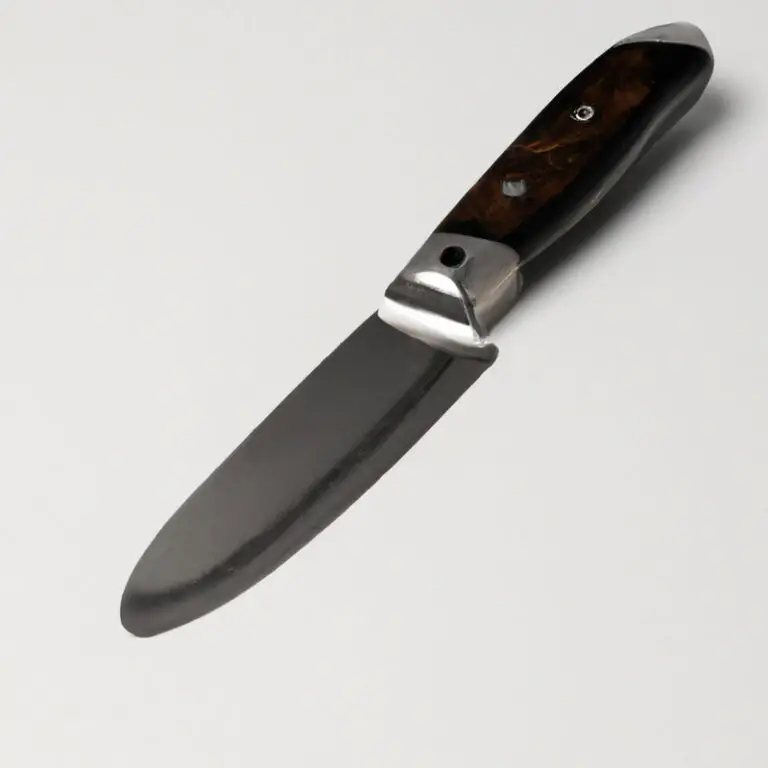How Do I Prevent Food From Sticking To My Paring Knife Blade? Tips
Key Takeaways:
- Use a non-stick coating or a Teflon blade to prevent food from sticking to your paring knife.
- Make sure to keep your knife sharp to prevent food from clinging or tearing.
- Using a wet or lubricated surface, such as oil or water, can also help prevent food from sticking to your knife blade.
- Proper knife handling and technique, such as adjusting your grip and angle, can also prevent food from sticking to your paring knife blade.
Have you ever experienced the frustration of trying to slice a sticky food, only to have it stubbornly cling to your paring knife blade? From cheese to citrus fruits, sticky foods can make food prep a daunting task.
However, with the right techniques and tools, you can prevent food from sticking to your paring knife blade.
As an experienced home cook, I have learned a few tricks over the years that can make all the difference. Let me share with you some practical tips on how to keep your paring knife blade clean and slick, allowing you to cut through sticky foods with ease.
| Tips to prevent food from sticking to paring knife blade |
|---|
| 1. Keep your knife sharp. |
| 2. Use a knife with a non-stick coating. |
| 3. Slice through food in a single motion without dragging the knife back and forth. |
| 4. Use a lubricant like cooking spray, olive oil, or butter. |
| 5. Dip the blade into hot water often. |
| 6. Try using a ceramic knife instead of a metal one. |
Choose the Right Paring Knife
Choosing the right paring knife is crucial to prevent food from sticking to the blade while cutting. Look for a knife with a sharp and thin blade, typically ranging from 2.5 to 4 inches in length.
The blade should be made of high-quality stainless steel or carbon steel for durability and precision.
A comfortable handle with a non-slip grip is also essential for safe and comfortable handling. Consider the shape of the blade, either straight or curved, depending on your cutting needs.
Choose a reputable brand with positive reviews and a warranty for extra security.
Investing in a high-quality paring knife will not only prevent food from sticking to the blade but also improve overall cutting performance and efficiency.
Keep Your Knife Sharp
To prevent food from sticking to your paring knife blade, it’s essential to keep your knife sharp. A dull knife can damage the food, leading to sticking.
Sharpen your knife regularly using a honing rod and sharpening stone.
A honing rod can realign the blade’s edge, and a sharpening stone can remove any nicks and dull patches. Always use a consistent angle while sharpening your knife.
A sharp knife provides precise and effortless cuts, reducing the risk of food sticking.
Lubricate Your Knife with Cooking Oil
To prevent food from sticking to your paring knife blade, try lubricating it with cooking oil. Applying a thin layer of oil on your knife blade prior to use can significantly reduce the likelihood of food sticking to it.
You can use any oil of your choice, such as vegetable or olive oil.
Simply pour a small amount onto a paper towel and rub it onto the blade. This will not only prevent food from sticking but also make slicing and chopping smoother and easier.
Remember to clean your knife thoroughly after use to avoid any residues that may transfer to your food during your next use.
Wet Your Knife Before Cutting Sticky Foods
Wetting your knife before cutting sticky foods can prevent the food from sticking to the blade. The moisture on the knife helps to create a barrier between the food and the metal, reducing friction.
It also ensures a smoother and cleaner cut.
Use a damp cloth or run the blade under water before cutting sticky foods like cheese, fruits, or vegetables. However, make sure not to soak the knife as excess moisture can damage the blade.
Wetting your knife is a simple technique that can significantly improve your cutting experience.
Slice Foods Slowly and Steadily
To prevent food from sticking to your paring knife blade, it’s important to slice foods slowly and steadily. Applying too much force or speed while cutting can cause your knife to slip, leading to accidents and injuries.
Slowly and steadily slicing is also beneficial for maintaining the integrity of the food being cut and ensuring that it’s done precisely.
A steady hand and a smooth, slow motion can help you achieve cleaner cuts and prevent sticking while using your paring knife.
Clean Your Knife After Each Use
It is crucial to clean your knife after each use to prevent food from sticking to the blade. Leftover food particles can become a breeding ground for bacteria, affecting the knife’s performance.
Experts recommend using warm water, mild soap, and a sponge to clean your knife thoroughly.
After washing, dry the knife immediately with a dry towel to prevent rust formation. Avoid soaking knives in water for an extended period and putting them in the dishwasher as it can dull the blade and damage the handle.
Keeping your knife clean will ensure its longevity and prevent food from sticking to it, providing a hassle-free cooking experience every time.
Store Your Knife Properly
To prevent your paring knife from getting damaged and to prolong its lifespan, it’s essential to store it properly. Here are some tips on how to store your knife safely:
- Use a Knife Block: Knife blocks are a convenient option for storing knives. They keep the blades safe and are easy to access.
- Use a Magnetic Strip: A magnetic strip is a great space saver for your kitchen. It can hold several knives with varying sizes and shapes in a small space.
- Use a Drawer Divider: Use a drawer divider to keep your knives organized and free from any damage while also making them easy to find.
- Blade Cover: When storing your knives, it’s important to use a recommended blade cover. They’re great for protecting the edge from any damage, preventing rust and dulling.
- Avoid Throw-In Drawers: Never store your knives in a throw-in drawer without any cover. It’s a great recipe for dents, chips, and broken tips.
By storing your paring knives properly, you can maintain their sharpness and ensure that they’re safe to use every time.
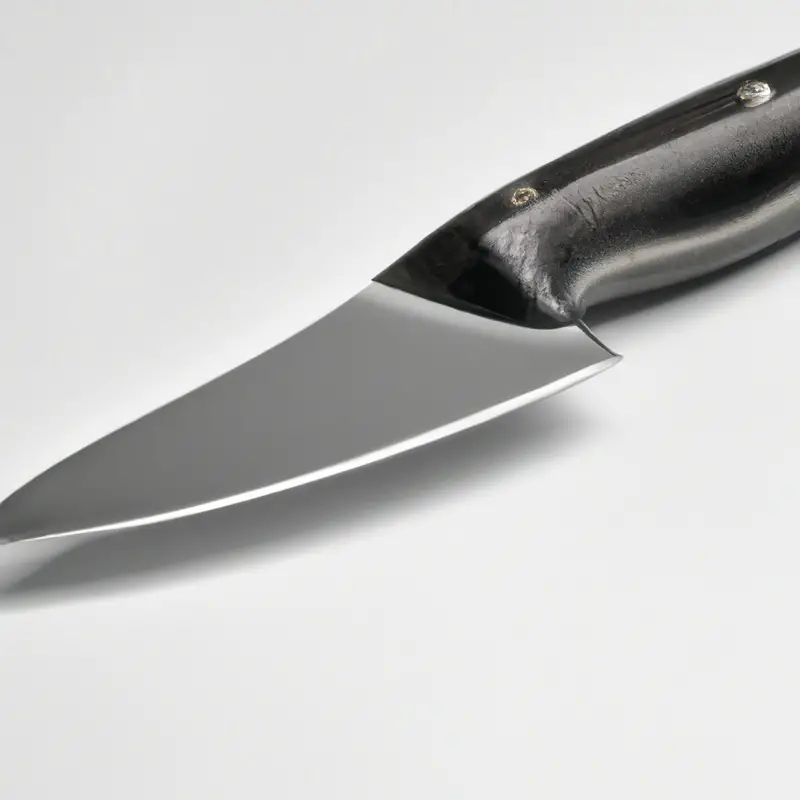
Use Plastic or Non-Stick Knives for Extremely Sticky Foods
When it comes to extremely sticky foods like cheese or dried fruit, plastic or non-stick knives are the better options to prevent the food from sticking to the blade. These types of knives are designed to have a non-stick coating, making them ideal for slicing through sticky foods with ease.
Using a plastic or non-stick knife also ensures that your food won’t be torn or damaged during the slicing process.
Opting for ceramic coated knives is also a good alternative, as they offer similar non-stick properties. Remember to always clean and maintain your knives to ensure their longevity and proper functionality, even with plastic or non-stick options.
Opt for Ceramic Coated Knives
Ceramic coated knives are an excellent option for preventing foods from sticking to your paring knife blade. The ceramic coating provides a non-stick surface that resists food build-up, making cleaning easier and allowing for smoother slicing.
Additionally, ceramic blades are highly durable and can retain sharpness for a longer time than their metal counterparts.
However, it’s important to note that ceramic blades are more fragile than metal blades and should be handled with care to avoid chipping. Overall, if you’re looking for a reliable, non-stick option for your paring knife, ceramic coated knives are a great choice.
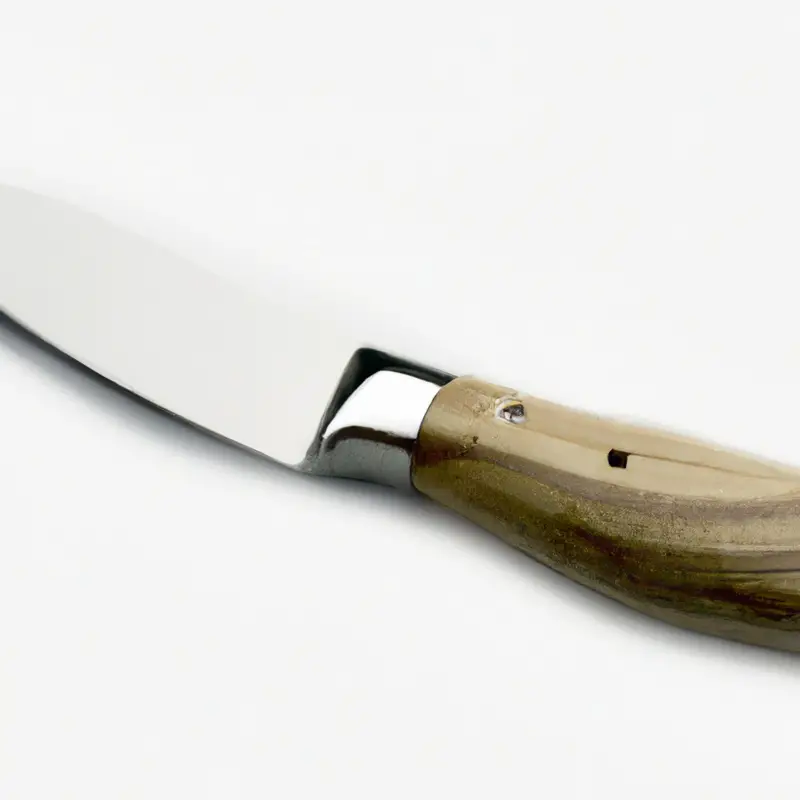
Regularly Maintain Your Knife
Regular maintenance of your knife is essential to keep it in good working condition and prevent food from sticking to the blade. Here are some tips to help you maintain your knife:
- Sharpen your knife regularly using a sharpening stone, honing rod, or an electric knife sharpener. A sharp knife will cut through food cleanly and easily, reducing the chances of food sticking to the blade.
- Use a damp cloth to wipe the blade after each use. This will prevent the buildup of food particles and bacteria, ensuring the knife stays clean and hygienic.
- Avoid cutting on hard surfaces like countertops or cutting boards made of glass, stone, or metal. These surfaces can dull the blade quickly, and a dull knife can cause food to stick to the blade.
- Don’t leave your knife soaking in water for long periods. This can cause the blade to rust and become dull. Instead, dry the knife thoroughly after each use.
- Store your knife properly by placing it in a knife block or sheath. This will protect the blade from damage and prevent it from coming into contact with other utensils that could dull or scratch it.
By following these tips, you can ensure your knives stay sharp and in good working condition, making it easier to prep food without anything sticking to the blade.
Final Verdict
Preventing food from sticking to your paring knife blade is crucial for efficient and safe food prep. By choosing the right paring knife, keeping it sharp, lubricating with cooking oil, wetting the blade before cutting sticky foods, slicing foods slowly and steadily, cleaning after each use, and storing it properly, you can ensure that your knife remains in top condition.
Additionally, plastic or non-stick knives should be used for extremely sticky foods, while ceramic coated knives are also a great option.
By regularly maintaining your knife, you can extend its lifespan while also preventing food contamination. Remember to prioritize safety in the kitchen and implement these practical takeaways for a seamless and enjoyable cooking experience.
With these tips in mind, you can become a masterful chef with a razor-sharp paring knife and an arsenal of culinary skills.

